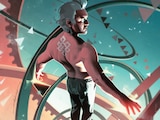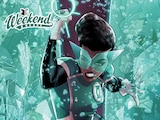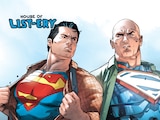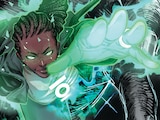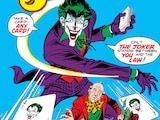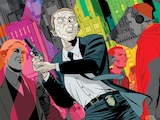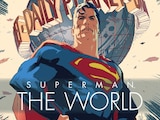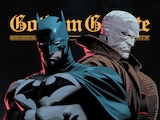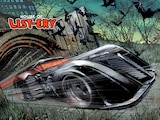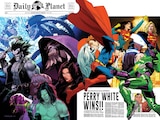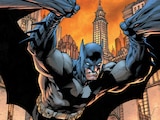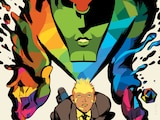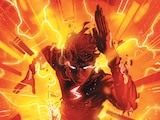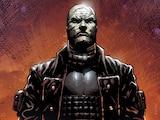I love a good anthology comic because they’re collections of the brightest creative voices in the comic book industry at any given point in time. I also look at anthology comics as a variety show of sorts—only one starring your favorite characters and brought to you by your favorite creators.
Luckily for us, DC has a long history with anthology comics. Lately, these have largely taken the form of DC’s seasonal, one-shot anthologies, but the publisher has also published series like Legends of the DC Universe that tell their otherwise standalone stories across multiple issues. To celebrate the full variety of anthology stories in the DCU, I’ve included examples of both kinds in this list of my personal top five favorites. So, without further ado, let’s jump in as we count down five of DC’s very best anthology stories.


“Superboy in Party Gift!”
Found In: DC Holiday Special ’09 #1
An anthology story list wouldn’t be complete without a holiday special in here somewhere. While the holidays are still a few months away, it’s always a good time to honor the charming look that Ralph Soll, Rodney Buchemi and Greg Adams brought to “Superboy in Party Gift!” The story depicts a holiday party for a collection of villains in the DC Universe, everyone from the Mad Hatter, to Bizarro, to Livewire, and more. While both the eggnog and conversation are flowing, the villains begin to wonder who even invited them in the first place.
It turns out, this wholesome gathering was put together by none other than Match, the Bizarro clone of Superboy. Like Bizarro, Match speaks in opposites, but he’s not always consistent. When he shows up to spill the details on his resolutions for the New Year, everyone is confused about what he actually meant. And what did he actually mean? That’s for you to decide.

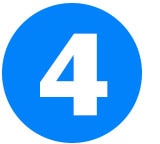
“Snapshot: Revelation!”
Found In: DC Universe Legacies #8
Two names: Len Wein and Frank Quitely. One task: to retell an iconic moment from Jack Kirby’s New Gods #3 from a new perspective. It sounds like something out of a dream, I know. Wein and Quitely paint a haunting picture of when Orion of the New Gods rescues a group of humans kidnapped by Darkseid. New Gods #3 is also the issue that confirms Orion was the biological son of Darkseid. It shows how he uses his Mother Box to shift his true, ugly Apokoliptian face into a beautiful face that blends in with the population on New Genesis.
Narrated by a young woman named Claudia Shane, who was among the group rescued in the original New Gods series, the story offers an insightful look at Orion and all of his contradictions. In New Gods #3, Claudia marvels at how beautiful Orion’s face was, likening him to a Greek statue, but here in “Snapshot: Revelation!” she describes him as having “a voice as cold as the grave.” There’s a darkness to Orion that Claudia picks up on, even without her knowing the history between Apokolips and New Genesis, and it reframes Kirby’s original story in a powerful way. If you’re at all skeptical for how this story lives up to Kirby’s masterwork, know that Quitely draws Orion’s true face in the most horrifying way possible. If you don’t believe me, you can see for yourself.

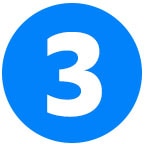
“Untitled”
Found In: Superman Red and Blue #1
John Ridley, Clayton Henry and Jordie Bellaire’s story, “Untitled,” which kicks off the Superman Red and Blue anthology series is one of those stories that acts as a north star for everything that Superman stands for. On an assignment for the Daily Planet, Clark travels back to a “reeducation” camp in a former Soviet Bloc country where he was imprisoned, as Superman, years earlier. He must now interview the former leader of the camp, who used low levels of Kryptonite radiation to torture Superman for months during his incarceration. Returning to this place to speak to this man as Clark Kent, instead of Superman, is terrifying for him, because he’s reminded of how powerless he felt during that dark period of his life.
We could always use more stories that showcase Clark Kent as a reporter, and “Untitled” makes the case for why. Clark has to contend with how his powers as Superman can only go so far when it comes to holding war criminals accountable. At the same time, as a reporter, he’s worried that the world has become a place where exploitation has become normalized because not enough people care to fight it. However, at the end of the story, in true Superman fashion, he decides that no matter the consequences, he’ll always care. In just a few pages, Ridley’s writing cuts to the heart of why Superman is such an important character. It’s not just his might that matters, it’s also his decision to keep fighting for the betterment of humanity. This story is a healing balm for anyone struggling with the state of the world today, and I hope it can help you as much as it’s helped me.

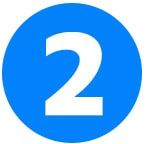
“Destroyer of Worlds”
Found In: Legends of the DC Universe #33-36
Hal Jordan may walk around the DC Universe today like he perpetually has the Top Gun soundtrack playing in his head, but this dude has been through A LOT. Hal fell from grace during the “Emerald Twilight” storyline in Green Lantern during the ’90s and he became the villain known as Parallax. After he was defeated by the Green Lantern Kyle Rayner, Hal became the Spirit of Vengeance himself, the Spectre, in order to atone for his sins. In effect, Hal traded one set of green clothes for a more dramatic set. And for years, this was the status quo in the DCU.
Over four issues of Legends of the DC Universe, the maestro J.M. DeMatteis weaves a story with Michael Zulli and Bill Oakley where Hal, as the Spectre, must come to terms with his death, his past and the demands of his new job. DeMatteis’s writing provides a three-dimensional picture of a very flawed man facing the consequences of his actions. It’s very broody and shows Hal Jordan at his most vulnerable. Something that bugged me for years about Hal was that I felt like I never got to see him do the difficult work of recognizing his mistakes and grappling with how he can be a better person. Here, in Legends of the DC Universe, is where he goes Extreme Makeover: Home Edition on himself and his conscience.


“The Beginning”
Found In: DC Love is a Battlefield #1
Have you ever wanted to have a good, cathartic cry? Usually I don’t, but the popularity of The Notebook makes me believe that there’s a good number of folks out there who do. Regardless of whether or not you count yourself among them, you’re in luck. “The Beginning,” by Tim Seeley, Rebekah Isaacs and Kurt Michael Russell, is here to make you believe in the power of love and shed a tear or two.
I’ve written about this Harley Quinn and Poison Ivy story before for our list of most romantic LGBTQIA+ moments in DC history, but it earns the top spot on this list too. (Yes, it’s that good.) Part of what is great about anthology stories is that they don’t necessarily have to conform to where characters are in the current timeline or continuity. That is, we can get stories about characters at any point in their lives. I don’t want to speak any further on how this plays out for Harley and Ivy in “The Beginning” because it will spoil everything that makes the story great. Just read it and enjoy it as a premiere example of what makes DC’s standalone short stories so wonderful—their unparalleled ability to use our history with these characters to move and surprise us over just a few short pages.
Jules Chin Greene writes about comics, TV, games and film for DC.com, and his work can also be found at Nerdist, Popverse and Multiverse of Color. You can follow him on Twitter and Bluesky at @JulesChinGreene.
NOTE: The views and opinions expressed in this feature are solely those of Jules Chin Greene and do not necessarily reflect those of DC or Warner Bros. Discovery, nor should they be read as confirmation or denial of future DC plans.

